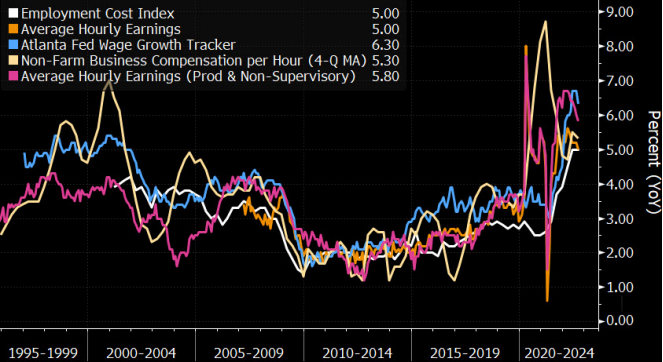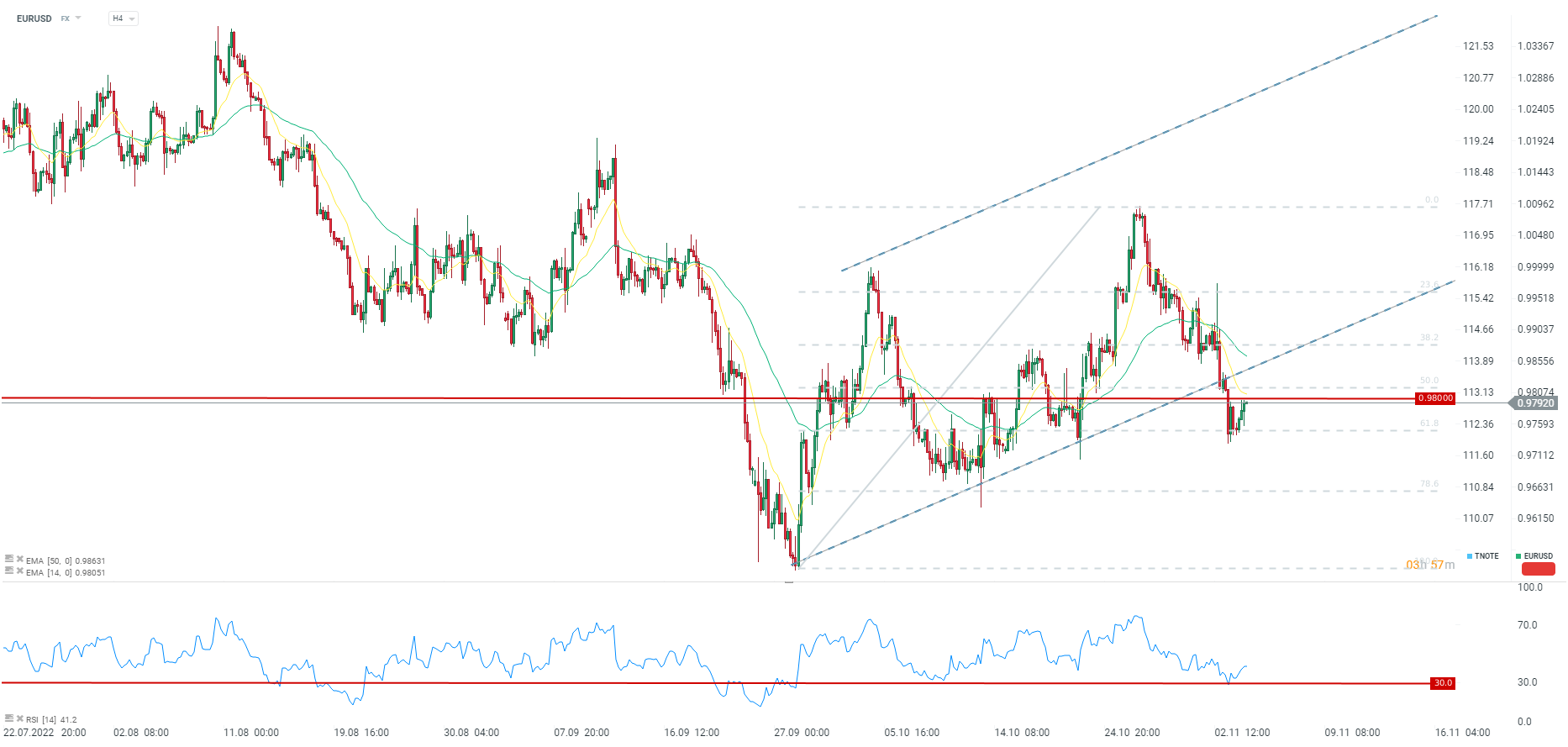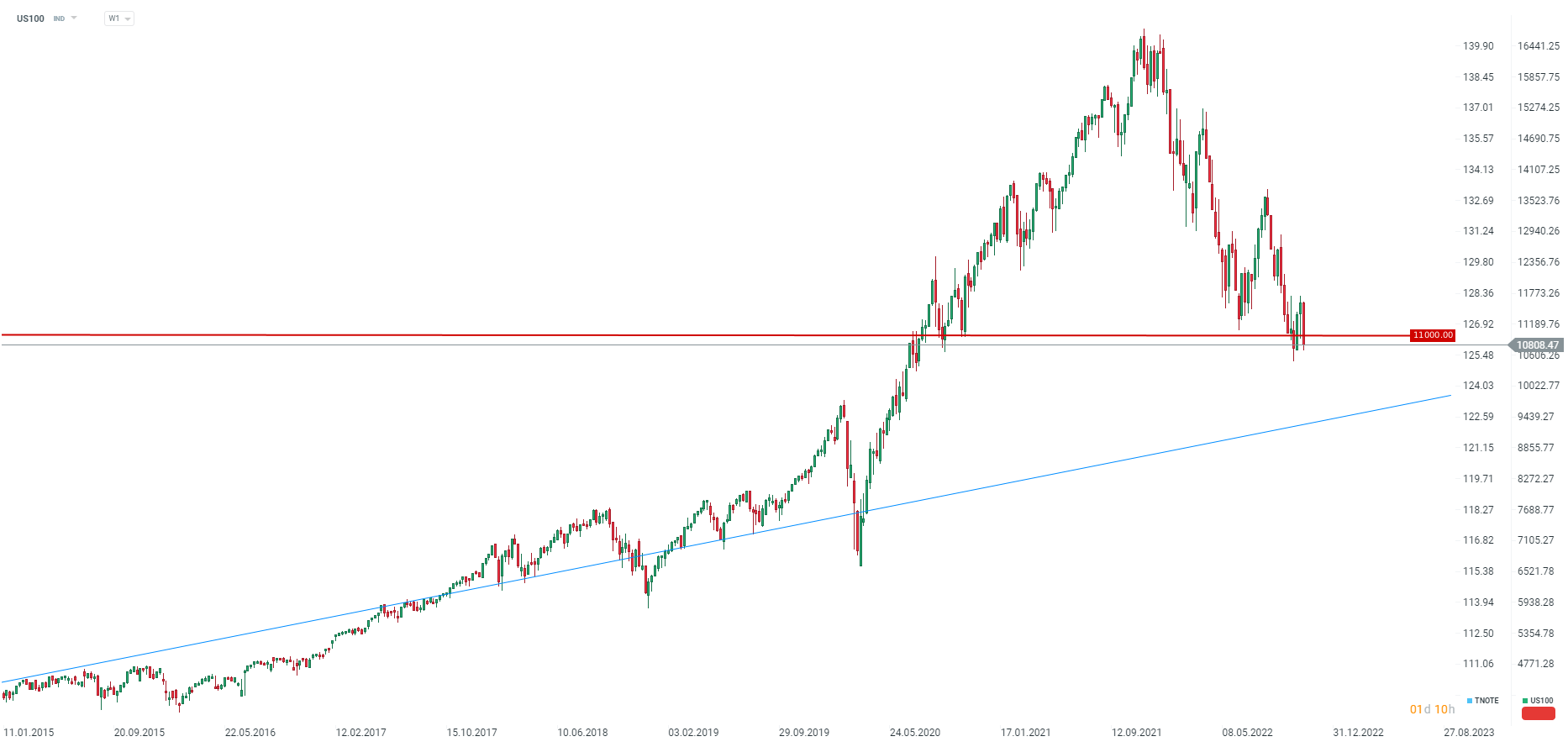US jobs data for October (12:30 pm GMT) may provide some hints on what Fed will do at the end of the year. Fed made it clear that the labor market remains strong and it may need to be cooled down a bit, in order to cool down inflation. As such, Fed may actually want to see a lower employment gain, pick-up in unemployment rate and significant deceleration in wage growth. Is such an outcome possible?
What markets expect from today's NFP release?
-
Markets expects employment gain of 200k, compared to previous month's increase of 263k. Economists' estimates range from 80k to 300k increase
-
ADP data for October pointed to a 239k jobs increase
-
Market consensus points to a pick-up in unemployment rate from 3.5 to 3.6%. However, it is still far off 4% level forecasted by Fed for 2023
-
Wage growth is expected to decelerate from 5.0 to 4.7% YoY. However, pace of wage increases is still far above Fed's inflation target of 2.0% (wage growth that would be in-line with Fed's inflation target is seen at 4% YoY)
-
ISM employment subindices pointed to a cooling of US labor market. US jobless claims remained above 200k in October, what suggests lower employment increase than in September
-
Seasonal patterns suggest that October's NFP reading should be much worse than September's
-
JOLTs for September showed increase leading to an increase in ratio of open jobs to unemployed to 1.86 (mid-year peak near 2.00)
What will be key for Fed?
Fed expects unemployment rate to increase to above 4.0% next year. However, deceleration in wage growth looks to be much more important. A number of indicators, like NFP wage growth data of Atlanta Fed wage index, suggest that peak in wage growth may already be behind us. On the other hand, wage growth still remains above 4%, a level that is often seen as in-line with Fed's 2% inflation target. As such, wage growth data will be key part of today's report as far as future Fed policy is concerned. Unemployment rate will be the second part in terms of importance and employment increase will be the least important.
 Wage growth indices signal that peak in US wage growth may already be behind us. Source: Bloomberg
Wage growth indices signal that peak in US wage growth may already be behind us. Source: Bloomberg
How will markets react?
Should NFP wage data meet expectations or come in below them and employment sees moderate increase, USD may continue to weaken. However, if wage growth fails to slow, USD may regain some ground it has lost today and yesterday. Lower wage growth will exert smaller upward pressure on inflation and therefore need for big rate hikes may be smaller. This should support stock market indices. On the other hand, if today's NFP data fails to show cooling down of US jobs market, indices may remain under pressure and continued pullback started on Wednesday.
 If NFP reports shows cooling down of US labour market, EURUSD may climb back above 0.9800, what will support seasonal rebound scenario. Lack of pick-up in unemployment rate and strong wage growth may see the pair move towards 0.9650. Source: xStation5
If NFP reports shows cooling down of US labour market, EURUSD may climb back above 0.9800, what will support seasonal rebound scenario. Lack of pick-up in unemployment rate and strong wage growth may see the pair move towards 0.9650. Source: xStation5

US100 would need to finish today's trading in the 10,950-11,000 pts area in order to brighten outlook for the next week. Downward momentum on US100 is strong however and a strong NFP report (with high wage growth) would support a bearish scenario. Source: xStation5
🚨US100 erases all daily gains
BREAKING: Philly Fed lower than expected, manufacturing weakens but outlook improves 📌
BREAKING: US100 ticks higher after NFP upbeat data release 💡
Chart of the day: US100 (20.11.2025)


